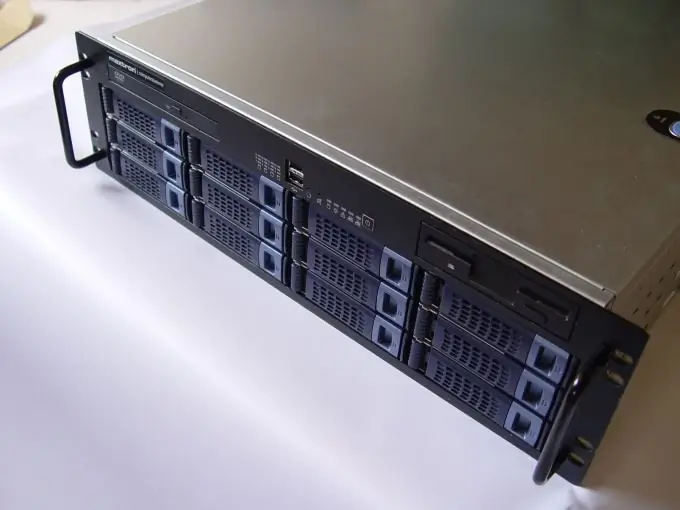- Author Lauren Nevill [email protected].
- Public 2023-12-16 18:48.
- Last modified 2025-01-23 15:15.
Server protection is one of the main concerns of its owner. Protection against attacks and overheating are the most important parameters for the successful, long and stable operation of the system. To do this, you need to install networking tools, and provide the server with good cooling and a backup power supply.

Necessary
- - Cooling system,
- - UPS,
- - basic computer security measures.
Instructions
Step 1
Without server protection, it makes no sense to count on its long-term operation. It can include two parameters, such as protection against overheating and breakdown, and protection "from the outside" (if the server is running on the Internet). The first important parameter is the installation of an uninterruptible power supply. In the event of any power failure, the UPS will keep the server running for some time, during which it will be possible to save all the necessary data and turn off the power accordingly. If a power surge occurs while data is being written to disk in the absence of additional power, it can lead to damage to equipment and the loss of all records. Moreover, the UPS saves the power supply from power surges, as a result of which the computer may burn out. It is important to note that a good "uninterruptible power supply" should provide at least 5 minutes of battery life.
Step 2
In the room where the server is located, it is necessary to install a competent cooling system. Despite the fact that computers may have a sufficient number of coolers, working in a stuffy space in summer can negate all the work of even the most expensive cooling. Installation of an air conditioning system is a must for any properly arranged server room. Also, the room must be constantly ventilated. The most ideal option for a server room is to install a water cooling system. However, it is quite expensive.
Step 3
To protect your server from DDoS attacks, you need to organize a proper firewall. It also requires constant monitoring of incoming traffic, which will allow timely detection of a threat. Organize a traffic scrubbing system and provide servers with intelligent intrusion detection. However, it should be noted that no such program can replace Internet security experts.






